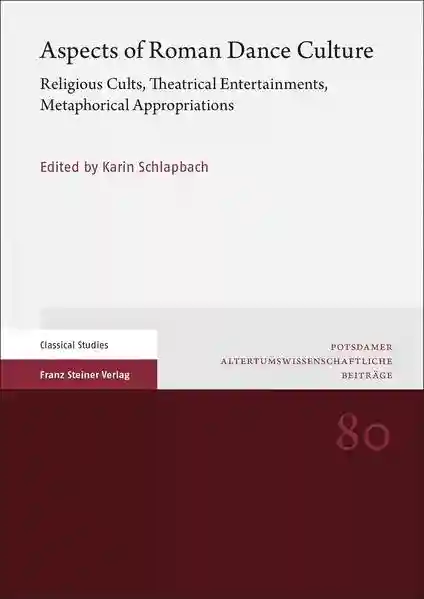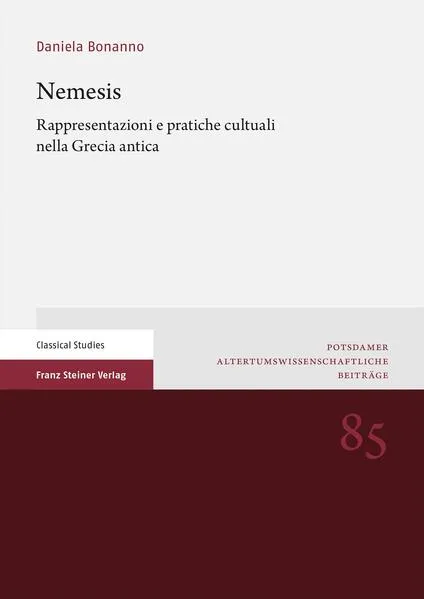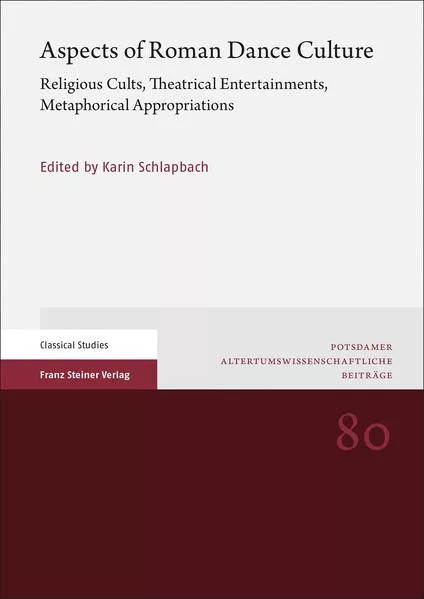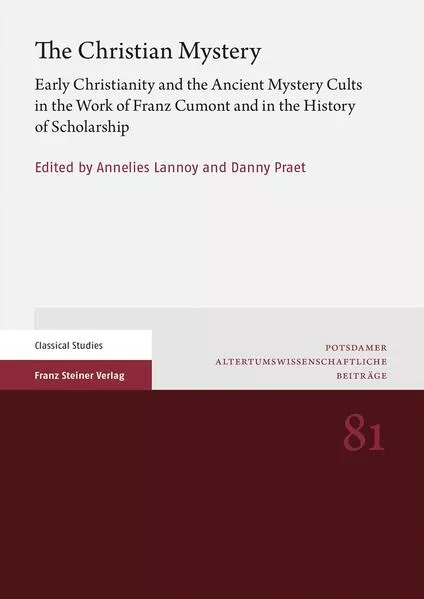Chronologie aller Bände (1 - 3)

Die Reihenfolge beginnt mit dem Buch "Nemesis". Wer alle Bücher der Reihe nach lesen möchte, sollte mit diesem Band von Karin Schlapbach beginnen. Der zweite Teil der Reihe "Aspects of Roman Dance Culture" ist am 19.10.2022 erschienen. Die Reihe umfasst derzeit 3 Bände. Der neueste Band trägt den Titel "The Christian Mystery".
- Anzahl der Bewertungen für die gesamte Reihe: 0
- Ø Bewertung der Reihe: 0
Diese Reihenfolge enthält 3 unterschiedliche Autoren.
- Autor: Bonanno, Daniela
- Anzahl Bewertungen: 0
- Ø Bewertung:
- Medium: Buch
- Veröffentlicht: 21.06.2023
- Genre: Sonstiges
Nemesis
La nemesis, espressione presso i Greci della censura sociale, e Nemesis potenza divina omonima, il cui santuario di maggior prestigio è collocato a Ramnunte in Attica, sono esplorate in questo volume in cui storia delle emozioni, storia culturale, sociale e religiosa si intersecano. Prendendo le mosse dalla ricezione della figura divina, l’analisi si concentra sulle forme della nemesis attribuite a mortali e immortali, per passare poi a ricostruire il profilo della divinità, quale emerge dalle tradizioni sulla sua genealogia, dalla sua vicenda mitica e dagli attributi onomastici con cui i Greci la invocavano. Infine, la ricerca si focalizza sulle pratiche cultuali e punta lo sguardo sul contesto documentario di Ramnunte che consente di ricostruire il paesaggio religioso in cui Nemesis era inserita. Indagando la relazione tra una pulsione emotiva e il teonimo corrispondente, il volume affronta la complessa questione dei culti riservati a concetti astratti, virtù o moti dell’animo, per esplorarne le dinamiche di funzionamento da una prospettiva storica, sul filo della tensione tra rappresentazioni note a livello "panellenico" e prassi religiose locali.
- Band: 80
- Autor: Schlapbach, Karin
- Anzahl Bewertungen: 0
- Ø Bewertung:
- Medium: Buch
- Veröffentlicht: 19.10.2022
- Genre: Sachbuch
Aspects of Roman Dance Culture
The fourteen chapters of this book examine Roman dance by looking at its role in Roman religion, by following it into the theatre and the banquet hall, and by tracing its (metaphorical) presence in a variety of literary contexts, including rhetorical treatises, biography, and lyric poetry. These different approaches, which draw on literary texts, inscriptions, documentary papyri, the visual record, and modern reperformances, converge in illustrating a rich and vibrant dance culture which prided itself on indigenous dances no less than on its capacity to absorb, transform, or revive the dance traditions of their Etruscan or Greek neighbours. Dance was a cultural practice which was able to affirm Romanness, for instance in the case of the Salian priests, but also to raise the question of what was Roman in the first place, for instance when the originally Greek pantomime was embraced by Augustus and came to be known as "Italian style of dancing". Together the fourteen case studies offer fresh perspectives on an underexplored topic, shedding light on the manifold contexts, functions, practitioners, and appreciations of Roman dance.
- Band: 81
- Autor: Lannoy, Annelies
- Anzahl Bewertungen: 0
- Ø Bewertung:
- Medium: Buch
- Veröffentlicht: 21.06.2023
- Genre: Mystery
The Christian Mystery
This volume examines the way the Belgian historian of religions Franz Cumont (1868–1947) and his contemporaries conceived of early Christianity's relation to the ancient mystery cults. As the comparative study of religion rose to academic prominence in late 19th century Europe, this question provoked fiery debates, fuelling methodological, ideological, and religious divides between scholars of different scientific and personal backgrounds. Cumont was a worldwide authority in the scientific study of the religions orientales, but he expressed his opinion on their relation to Christianity only ambiguously. Yet, his publications deeply impacted the debates of his time because of the numerous similarities they revealed between Christian and pagan traditions. Written by specialists from various academic disciplines (e.g., history of religions, theology, New Testament studies), this collection of papers offers a much-needed study of how Cumont and other leading 19th century scholars discussed this theme. It also offers critical reflections on what is left of their ideas in present-day research on this most fascinating subject matter in the study of ancient religion.


